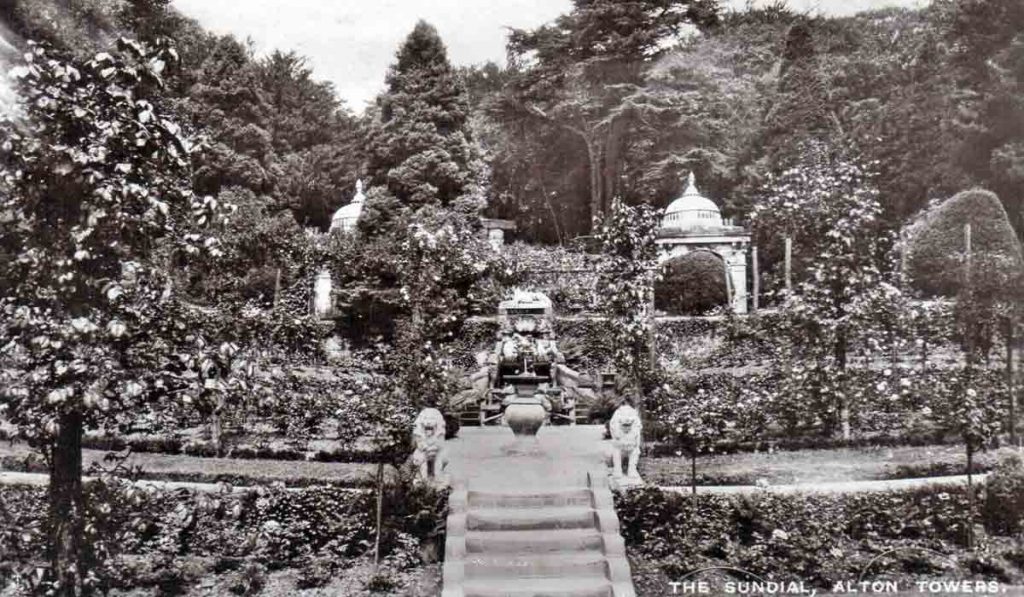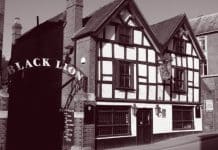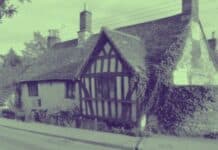Staffordshire-based ANDREW GARVEY picks some of his county’s spookiest ghost tales from the Victorian era

The green and pleasant county of Staffordshire has plenty of spooky and macabre connections.
Many will point to Cannock Chase, an officially designated Area of Outstanding Natural Beauty which boasts a slew of UFO sightings, fleeting glimpses of mysterious creatures and spectres at the German military cemetery. But what strange and ghostly goings-on were afoot in Staffordshire in the Victorian era?
It turns out there are plenty to choose from, as described by David Bell in his 1994 book ‘Ghosts and Legends of Staffordshire and the Black Country’, an entertaining, neat little book, that’s now unfortunately quite hard to find.
Here’s just two, along with a quick look at how much we can rely on them.
Ghosts of Alton Towers
One evening in 1847 (or possibly 1848) Dr. F. A. Paley and Bertram, the young man he was tutoring, were riding home at dusk when they saw something strange.
Bertram was heir to the Earl of Shrewsbury and living at Alton Towers (the stately home, not the genuinely horrifying modern day theme park named after it) at the time.
Both Paley and Bertram, according to a letter Paley wrote in 1883, saw a hefty gypsy woman, stood at the top of a steep bank by the roadside, staring at them.
Paley claims to have dismounted and clambered up the bank to question the woman only to find she had mysteriously disappeared.
Arriving home, Paley discussed the sighting with a clearly shalken Lady Shrewsbury. Paley later learned of an old family legend that a gypsy apparition preceded the untimely death of a family heir.
Young Bertram promptly died of consumption in 1852. That’s promptly, four or five years later.
Paley’s tale was questioned as far back as 1889 by W. Basil Worsfold in a paper called ‘the Modern Ghost’.
Worsfold quotes Paley’s account in full, including the caveat “of course, being dusk it may have been an optical delusion of some kind.” While Paley believed the existence of the family legend confirmed his tale, Worsfold felt otherwise. Noting that Bertram actually died in 1856 and therefore was “quite impossible to connect the apparition with a death which happened nine years afterwards…” Worsfold put the entire incident down to “a simple delusion” and the ‘gypsy woman’ nothing more than “stunted oak trees seen in the dark.”
A ghostly large white rabbit
One of the area’s stranger spectral tales concerns a large white rabbit which terrified passers-by in the 1850s. In the woods between Cobridge and Etruria (now two urban areas of Stoke-on-Trent) there were reports of “a piercing scream like that of a young boy in terror” followed by the appearance of a large white rabbit which would run down the path and instantly disappear into thin air.
According to Bell’s book, one brave, anonymous man decided to try and catch the rabbit. After walking the path for several nights he finally heard the scream and tried to seize the creature, only for his hands to pass straight through it. The would-be hero was left shaken and with a dislocated shoulder, presumably when he tumbled to the ground like a sack of spuds.
Supposedly, the screams are those of 14-year-old John Holdcroft who was killed by his ‘friend’ Charles Shaw, a boy of 16, in an August 1833 row over a game of pitch-and-toss which escalated into a fight which ended withn the older boy strangling the younger one and then stringing his corpse from a tree to try and make it look like suicide. The body remained undiscovered for some months and the rabbit was a manifestation of John’s restless soul.
Somewhat unsportingly, local history website www.thepotteries.org also discusses the Holdcroft-Shaw murder, giving the boy’s ages as 9 and 14 respectively and noting that while the foul deed took place in August 1833, the body was found in a ditch and the inquest and trial were held shortly after.
The Glasgow Herald of August 23rd 1833 confirms the body was found the next day and the inquest took place a day after that. Shaw, who worked at the same pottery factory as Holdcroft was “apprehended on suspicion; and a long train of circumstantial evidence convinced the jury of his guilt.” This differs significantly from the legend that Shaw was, in David Bell’s telling, consumed by guilt and confessed to the murder several months later. Either way, in all versions of the story, Shaw’s resulting death sentence was commuted to transportation due to his age.
A Cannock Chase Christmas Ghost Story
A ‘true’ ghost story in the Dickens/James tradition concerns a Christmas Eve gathering at Hatherton Hall on Cannock Chase. It seems that a merry group of men, the friends of Lord Hatherton (precisely which one and the exact date are typically vague but it’s usually described as mid-nineteenth century) were enjoying some fine wines from an unusual drinking vessel.
Passing around a goblet made from a skull that the Lord of the Manor explained had been dug up from a private chapel and belonged to one of his ancestors was probably no big deal since it had been tastefully blinged out with silver.
Gleefully unaware, or unconcerned with, the possible supernatural implications of drinking from the disinterred remains of an unnamed ancestor, the Lord and his pals (presumably) had a fine old time boozing, farting and telling dick jokes.
Until the stroke of midnight, that is.
Just then, they heard mysterious footsteps outside and the silver-lined goblet suddenly fell to the floor, spinning inexplicably. Even less reasonably, a headless, armoured figure appeared in the doorway.
Politely, the visitor, presumed to be Sir Hugh de Hatherton, bowed (he could hardly say ‘good evening’ now, could he?) crossed the room and disappeared through a closed door.
As he left, the goblet also disappeared. And despite a full search of the Hall the next morning it was nowhere to be found. All that remained, on the frosty lawn was a ball of silver, the rolled up lining.
Not all the county’s reputed spirits are quite as polite and genteel as Hatherton.
Oppressive widow of Checkley
In the late nineteenth century, the Staffordshire Moorlands village of Checkley was, if not haunted, then at least socially oppressed by the eternally disapproving Mrs Hutchinson.
Widowed in 1878, she spent the final years of her life sternly disapproving of the comings and goings of her fellow villagers.
Non-attendees at church could apparently expect a visit the next day and the opportunity to explain exactly what it was they had been doing instead.
The puritanical Mrs Hutchinson died in 1895 but reportedly stuck around far longer than she should have.
Twentieth century sightings, most notably from the 1930s and 40s of this most Victorian of ghosts aren’t limited only to the rectory. Mrs Hutchinson supposedly also haunts the village primary school that was named in memory of her husband.
Dressed in either a grey or black long dress with a white cap and sometimes described as carrying a walking stick or accompanied by her dog, she has also knocked on doors to interrupt a parish council, called out to later residents of the rectory and been spotted striding across the school playground.
Still, compared to the living Mrs Hutchinson’s fearsome reputation her ghost would seem to be a fairly pleasant and inoffensive one.







